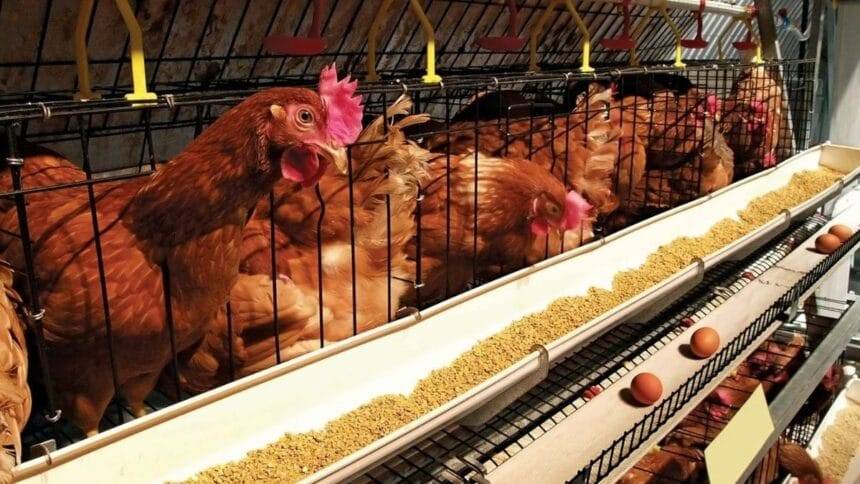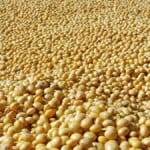Main Points In Hindi (मुख्य बातें – हिंदी में)
यहाँ पर दिए गए पाठ के 3 से 5 मुख्य बिंदु निम्नलिखित हैं:
-
बीमारियों का खतरा: मुर्गियों के लिए सबसे बड़े खतरनाक रोग बर्ड फ्लू और रानी खेट हैं, जो पॉल्ट्री किसानों के लिए गंभीर आर्थिक नुकसान का कारण बनते हैं।
-
जलवायु परिवर्तन का प्रभाव: जलवायु परिवर्तन के कारण मुर्गियाँ विभिन्न बीमारियों का शिकार हो रही हैं, जिससे उनकी मृत्यु दर में वृद्धि हो रही है।
-
फार्म की सफाई और निरंतरता: पॉल्ट्री फार्मों में फैल रहे संक्रमणों से बचने के लिए उचित सफाई और निरंतरता की आवश्यकता है, जैसे कि अपशिष्ट का नष्ट करना और उपकरणों का नियमित रूप से डिसइंफेक्ट करना।
-
संक्रमण नियंत्रण के उपाय: फार्म को सफाई और रोगाणुरहित करने के लिए विभिन्न रसायनों जैसे सोडियम हाइपोक्लोराइट, क्वाटरनरी अमोनियम सॉल्ट्स, और फॉर्मालिन का उपयोग किया जा सकता है।
- आपातकालीन निपटान: मृत मुर्गियों, अंडों और बर्बाद भोजन को संग्रहीत करने और जलाने जैसे उपायों को अपनाकर फार्म की स्थिति को नियंत्रित किया जा सकता है।
Main Points In English(मुख्य बातें – अंग्रेज़ी में)
Here are the main points from the provided text:


-
Disease Risks in Poultry Farming: Hens are particularly susceptible to diseases during the laying and production phases, with bird flu and Rani Khet being the most impactful. Bird flu can lead to complete farm shutdowns, while Rani Khet causes gradual losses.
-
Impact of Climate Change: Climate change exacerbates the prevalence of diseases in chickens, heightening the urgency for poultry farmers to implement preventative measures.
-
Waste Management for Disease Prevention: Effective waste and organic matter management is essential to protecting poultry farms from diseases. Proper disposal and disinfection of waste can reduce infection risks and associated costs.
-
Disinfection Practices: Comprehensive cleaning and disinfection protocols are crucial for maintaining poultry farm hygiene. This includes disinfecting hatcheries, equipment, and transportation vehicles, as well as using specific chemical solutions for various surfaces.
- Handling Spoiled Materials: Proper disposal methods for spoiled eggs, leftover feed, and animal carcasses include burning and burying, alongside the incineration of protective clothing used by workers who handle dead chickens.
Complete News In Hindi(पूरी खबर – हिंदी में)
चाहे मुर्गी अंडे दे रही हो या चिकन उत्पादन के लिए तैयार हो रही हो, वह बीमारियों के प्रति सबसे अधिक संवेदनशील होती है। ये बीमारियाँ मुर्गी पालन वाले किसानों के लिए खर्च को बढ़ा देती हैं। मुर्गी विशेषज्ञों का कहना है कि मुर्गी पालन में सबसे नुकसान पहुंचाने वाली दो प्रमुख बीमारियाँ हैं – बर्ड फ्लू और रानी खेत। रानी खेत बीमारी से मुर्गियाँ धीरे-धीरे 50-100 की संख्या में मरती हैं, लेकिन बर्ड फ्लू के कारण पूरा मुर्गी फार्म प्रभावित हो जाता है। यह बीमारी मुर्गी किसानों को अपने फार्म को बंद करने पर मजबूर कर देती है।
अब जलवायु परिवर्तन के कारण मुर्गियाँ लगातार किसी न किसी बीमारी का शिकार होती हैं। लेकिन मुर्गी विशेषज्ञों के अनुसार, कुछ चीजें ऐसी हैं जिन्हें निरंतर उपयोग में लाकर मुर्गियों की मौत और बीमारियों के खर्च को कम किया जा सकता है। इसके लिए, मुर्गी फार्म में मौजूद ऐसे कचरे, जैविक और अन्य कचरे को नष्ट करना आवश्यक है, जिन्हें कीटाणुरहित नहीं किया जा सकता, ताकि फार्म को बीमारियों और संक्रमण से बचाया जा सके।
मुर्गी फार्म और उपकरणों की सफाई कैसे करें
- हैचरी, अंडे का भंडार कमरे, पैकेजिंग कक्ष, अंडे की गाड़ी और अंडे उत्पाद संयंत्र को सही तरीके से कीटाणुरहित करना चाहिए।
- चिकन, अंडे और मुर्गी चारा ले जाने वाले वाहनों को भी कीटाणुरहित करना चाहिए।
- जिन फार्म में संक्रमण फैल चुका है, उनकी दीवारों, फर्श और छतों की धुलाई और कीटाणुरोधन किया जाना चाहिए।
- चicken के पिंजरों को गर्मी द्वारा कीटाणुरहित किया जा सकता है।
- फार्म में पानी पीने और खाने के लिए उपयोग किए जाने वाले उपकरणों को कम से कम 48 घंटों तक धोना चाहिए। कीटाणुरोधक उपचार भी दिया जाना चाहिए।
- जिन स्थानों पर पीने का पानी स्टोर किया गया है, उन्हें भी खाली करना, अच्छी तरह धोना और कीटाणुरहित करना चाहिए।
- फीड टैंक (सिलो) को भी खाली करके गर्म पानी से धोना चाहिए।
- धुलाई और कीटाणुरोधन के बाद, फार्म के सभी यूनिट्स को हफ्ते में दो बार धूम्रपान करना चाहिए।
- मुर्गी फार्म के कर्मचारियों और आगंतुक अधिकारियों के हाथों और पैरों को साफ करने के लिए रेक्टिफाइड स्पिरिट या सेव्लॉन, डेटॉल का उपयोग किया जाना चाहिए।
- जूते साफ करने के लिए, मुख्य द्वार के पास फुट मैट पर 2 प्रतिशत NaOH का घोल इस्तेमाल करना चाहिए।
- गम्बूट और अन्य सामान को साफ करने के लिए 2 प्रतिशत NaOH का घोल इस्तेमाल किया जा सकता है।
- सोडियम हाइपोक्लोराइट: 2 प्रतिशत सक्रिय क्लोरीन घोल (उपकरणों के कीटाणु-नाशक के लिए).
- क्वाटरनरी अमोनियम साल्ट: 4 प्रतिशत घोल (दीवारों, फर्श, छतों और उपकरणों के लिए).
- कैल्शियम हाइड्रॉक्साइड: 3 प्रतिशत घोल (दीवारों और फर्श के लिए).
- क्रेसोलिक एसिड 2.2 प्रतिशत घोल (फर्श के लिए).
- सिंथेटिक फिनॉल 2 प्रतिशत घोल (फर्श के लिए).
- धूम्रपान के लिए फॉर्मालिन और परमैंगनेट का उपयोग करें।
- अंडे और अंडे के उत्पादों को जानवरों के शवों के साथ गड्ढों में दफन भी किया जा सकता है और जलाया जा सकता है।
- बिगड़े हुए और बचे हुए चारे को सुरक्षित तरीके से जलाया जा सकता है।
- मरत मुर्गियों को नष्ट करने में लगे श्रमिकों के protective clothing को भी जलाना चाहिए।
इसके अलावा पढ़ें: गलेनडर्स: घोड़ों, गधों और खच्चरों की आवाजाही पर प्रतिबंध, जानें किस राज्य ने यह निर्णय लिया
Complete News In English(पूरी खबर – अंग्रेज़ी में)
Whether a hen is laying eggs or is getting ready for chicken production, she is most at risk from diseases. And these diseases only increase the costs of a poultry farmer. Poultry experts say that the two major diseases that cause the most harm to poultry farmers are bird flu and Rani Khet. Even though chickens die slowly in numbers of 100-50 due to Rani Khet disease, the entire poultry farm gets wiped out due to bird flu. This is the disease which forces the poultry farmer to lock the poultry farm.
Anyway, now due to climate change, chickens keep falling prey to some disease or the other. But according to poultry experts, there are some things which can be used continuously in poultry farm to save the expenses on death and illness of chickens. For this, it is necessary to destroy the waste, organic and other waste present in the poultry farm which cannot be disinfected, to protect the farm from diseases and infections.
Also read: Mother Dairy and Uttarakhand launched ghee made from Gir-Badri cow milk and traceability system.
How to clean poultry farm and equipment
- Hatchery, egg store room, packaging room, egg trolley, egg product plant should be properly disinfected.
- Also disinfect vehicles used for transportation of chickens, eggs and poultry feed.
- Washing and disinfection of walls, floors and ceilings should be done in farms where infection has spread.
- Chicken cages can be disinfected by applying heat.
- Equipment used for drinking water and eating feed in the farm should be washed for at least 48 hours. Disinfectant treatment should also be given.
- The farm where drinking water is stored should also be emptied, thoroughly washed and disinfected.
- The feed tank (silo) should be emptied and washed with hot water pressure pump.
- After washing and disinfecting, fumigate all units of the farm twice a week.
- Rectified spirit or Savlon, Dettol should be used to clean the hands and feet of farm workers and visiting officials.
- To clean shoes, 2 percent solution of NaOH should be used on the foot mat near the entry gate.
- 2 percent solution of NaOH can be used to clean gumboots and other items.
- Sodium hypochlorite: 2 percent active chlorine solution (for disinfection of equipment).
- Quaternary ammonium salts: 4 percent solution (for treating walls, floors, ceilings and equipment).
- Calcium hydroxide: 3 percent solution (for treating walls and floors).
- Cresolic acid 2.2 percent solution: (for treating floors).
- Synthetic phenol 2 percent solution: (for treating floors).
- Use formalin and permanganate for fumigation.
- Eggs and egg products may also be buried in pits along with animal carcasses and burned.
- Spoiled and leftover feed can be burned in a more convenient manner.
- The protective clothing of the workers engaged in destroying dead chickens should also be burnt.
Also read: Glanders: Ban imposed on movement of horses, donkeys and mules, know which state took the decision






